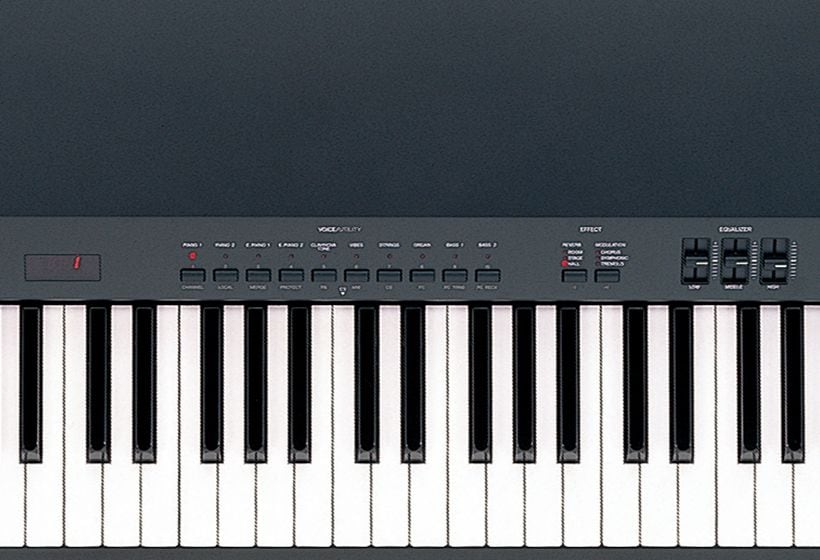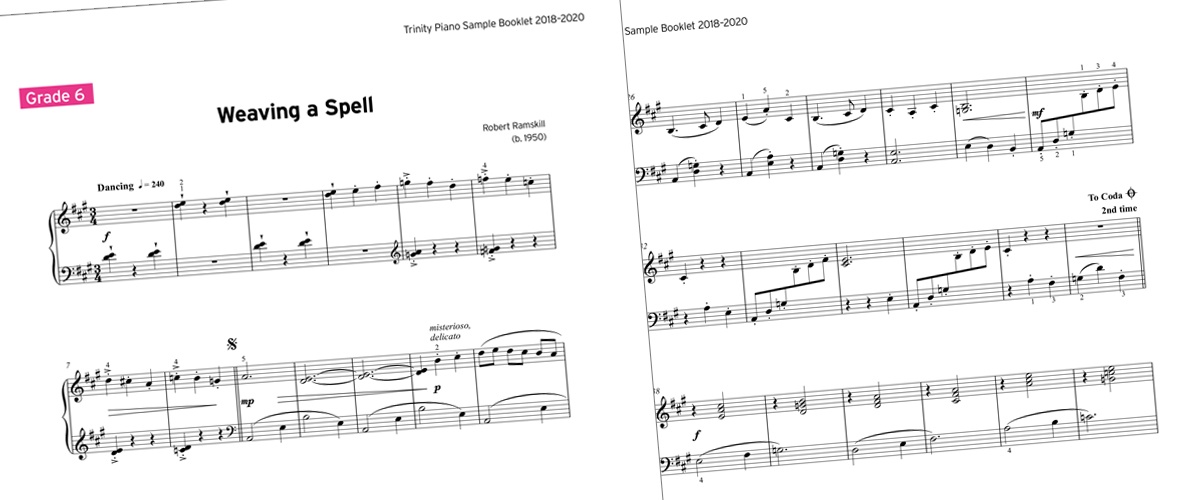Piano samples are digital recordings of piano sounds used in music production. They emulate the tones of acoustic pianos through software or keyboards.
In the meantime, don't forget to unlock a world of unlimited sound with Amazon Music Unlimited, where over 100 million songs wait at your fingertips. Whether you're working, relaxing, or fueling your creativity, the right track is always just one tap away. Elevate every moment with music that moves you.
Crafting music with authentic piano sounds has never been easier, thanks to the proliferation of piano samples available to producers and musicians. These samples capture the rich, nuanced timbres of various piano types, from grand to upright, and everything in between.
With piano samples, artists can add the depth and warmth of real piano instrumentation to their tracks without the need for a physical piano. This not only simplifies the recording process but also opens up a world of creative possibilities, as these samples can be manipulated to fit any genre or style. The use of piano samples is an invaluable tool in modern music production, offering a cost-effective and space-saving solution to incorporate the iconic piano sound into digital compositions.
The Essence Of Piano Samples
Digital music has revolutionized the way we experience piano sounds. Piano samples are at the heart of this transformation. They capture the richness and versatility of a grand piano without the need for the actual instrument.
The Basics Of Sampling
Sampling is like taking a musical photograph. A piano note is played, recorded, and stored digitally. This digital snapshot can then be played back by musicians and producers on a variety of devices.
- Individual Notes: Each piano key’s sound is recorded.
- Velocity Layers: The same note played at different strengths is captured.
- Sustain Samples: How the sound lingers is also recorded.
Why Piano Sounds Are Sampled
Have you ever imagined the grandeur of a concert hall in your bedroom? Piano samples make that possible.
| Reasons for Sampling | Benefits |
|---|---|
| Accessibility | Play piano sounds on any device. |
| Versatility | Create music in various styles. |
| Convenience | No need for a physical piano. |
| Affordability | Save money on instrument costs. |
Whether for a pop melody, a movie score, or an electronic track, piano samples bring the beloved piano’s essence to creators everywhere.
From Acoustic To Digital
From Acoustic to Digital: the journey of piano samples begins with capturing the rich, resonant sounds of traditional acoustic pianos and transforming them into versatile digital formats. This process allows musicians and producers to use these classic tones in modern music production, without the need for a physical piano.
Recording Techniques
To create high-quality piano samples, the recording process must be meticulous. Multiple microphones capture the piano’s sound from different angles and distances, which helps in preserving its depth and dimension.
- Close micing for detail and attack
- Ambient micing for natural reverberation
- Varying velocities for dynamic range
Recording techniques are crucial for realism.
Analog To Digital Conversion
Once the acoustic sounds are recorded, they must be converted into a digital form. This involves Analog to Digital Conversion (ADC). ADC retains the original sound characteristics in a format that digital devices can interpret and store.
| Step | Description |
|---|---|
| Sampling | Sound waves turned into digital samples |
| Quantization | Assigning a numerical value to each sample |
| Bit-Depth | Determines the sample’s dynamic range |
| Sample Rate | How often samples are captured per second |
The key is to maintain the piano’s natural dynamics and tonality during this process.
Types Of Piano Samples
Piano samples bring the rich sound of pianos to music producers and composers everywhere. Various types of samples exist to meet specific needs and evoke different atmospheres in music. Understanding the differences among these samples helps in crafting the perfect sound for any track or performance.
Grand and Upright Piano SamplesGrand And Upright Piano Samples
Grand and upright piano samples are foundational in the world of digital music. Grand pianos offer a large, resonant sound, which is perfect for classical and dramatic compositions. Upright pianos, on the other hand, tend to have a more compact and intimate sound. This quality suits genres like jazz or pop.
- Grand Piano Samples: Feature a full-bodied resonance, ideal for concert performances.
- Upright Piano Samples: Deliver a warmer, more personal tone for smaller venues or recordings.
Vintage And Modern Sounds
Piano samples also differ in style, as vintage sounds capture the essence of old pianos with character, while modern piano samples are clean, pristine, and suitable for contemporary music. Vintage samples often have a nostalgic quality, whereas modern samples strive for clarity and perfection.
- Vintage Piano Samples: Exhibit a warm, sometimes imperfect sound reminiscent of past decades.
- Modern Piano Samples: Feature a crisp, clear tone for today’s high-definition audio.
Layered And Multisampled Pianos
Multisampled pianos provide a dynamic and expressive playing experience. Each note has several recordings at different velocities, creating a realistic and nuanced sound. Composers find these samples effective for fine-tuning performances. Layered piano samples combine multiple sounds, such as strings and synth pads, to create lush, textured music.
- Multisampled Pianos: Offer subtle sound changes, mimicking an acoustic piano’s response.
- Layered Pianos: Blend various sounds for rich, complex musical landscapes.

Credit: usa.yamaha.com
Utilizing Piano Samples
Piano samples bring life to music compositions without a real piano. They offer endless creative possibilities. Producers and musicians find these tools incredibly handy. Piano samples allow for rich, complex sounds even in home studios. Let’s explore how these sounds can enhance compositions and performances.
Composition And Arrangement
Piano samples add depth to musical creations. They are a treasure for composers who might not have access to a grand piano. Here are their benefits:
- Versatility: Access various piano tones, from classical grands to modern uprights.
- Affordability: Samples are cheaper than recording with a real piano.
- Convenience: Use samples anytime, with just a few clicks.
Arranging music with piano samples can be simple. Most software allows you to drag and drop samples. This means quick editing and rearranging.
A table to summarize the steps:
| Step | Action |
|---|---|
| 1 | Select the desired piano sample |
| 2 | Drag it into your composition |
| 3 | Adjust the pitch and duration |
| 4 | Mix with other instruments |
Live Performance Applications
Piano samples can greatly enhance live performances. Here are some advantages:
- Full Sound: Samples provide a rich piano sound without a full band.
- Flexibility: Trigger different samples to suit the song’s mood.
- Portability: Avoid carrying heavy instruments to gigs.
Performers use MIDI controllers to play samples live. They map the piano sounds to the keyboard. This way, the artist can play the samples as if it were a real piano.
The Technology Behind Piano Sampling
Piano sampling captures the true essence of a piano’s sound. It uses advanced technology to record each note meticulously. This creates a digital library of piano sounds. Musicians and producers access these sounds without a physical piano. Two main technologies drive piano sampling: software instruments and sound libraries, and sampling hardware. Let’s delve into each one.
Software Instruments and Sound LibrariesSoftware Instruments And Sound Libraries
Software instruments bring pianos to life within digital workstations. They allow for nuanced audio manipulation. Sound libraries are databases of recorded notes. They often include adjustments for tone and expression. These libraries work with software instruments for a realistic piano experience.
- Key features: High-quality recordings, multiple velocity layers, pedal noises, and reverberation control.
- Benefits: Easy to use, accessible, and versatile for various music genres.
Brands like Native Instruments and Spectrasonics provide top-tier piano libraries. These mimic grand pianos and upright pianos with precision.
Sampling HardwareSampling Hardware
Sampling hardware captures and plays piano notes. It can be standalone equipment or integrated into keyboards. This hardware processes and stores the digital samples. It ensures users play sounds with minimal latency.
| Hardware Type | Function |
|---|---|
| Standalone Samplers | Record and playback without a computer. |
| Integrated Keyboard Workstations | Combine synthesis, sampling, and sequencing. |
Renowned brands like Roland and Akai manufacture hardware that professionals use worldwide. They offer tactile control over piano samples for an immersive experience.

Credit: bedroomproducersblog.com
Creative Possibilities
Piano samples unlock endless creative avenues for producers and musicians. These recorded snippets of piano music range from single notes to complex melodies. They give artists the power to craft unique sonic experiences without needing a real piano. Now, let’s dive into the ways we can transform these samples into something extraordinary.
Manipulating Piano Samples
With today’s digital tools, manipulation of piano samples stands as an artform in itself. Here are several techniques to warp these sounds:
- Changing Speed: Altering the tempo can add a fast-paced excitement or a slow, emotive pull.
- Reversing Audio: Play it backwards for a haunting, mysterious effect.
- Pitch Shifting: Modify the pitch to fit into your track or to create harmonies.
- Layering Effects: Apply reverb or delay for depth, or distortion for grit.
These methods help in carving out a distinct sound personality. The transformed sample becomes a foundation or a complement within your musical piece.
Merging Genres And Sounds
Implementing piano samples paves the path to merge different musical worlds. Consider the following pairings:
| Genre | Effect of Piano Sample |
|---|---|
| Electronic | Soothing acoustic touch to synthetic beats. |
| Hip-Hop | Classic vibe to fresh, cutting-edge tracks. |
| Rock | Elegant melodies among heavy guitar riffs. |
By blending different genres, piano samples help you create something truly unique. They can be the linking piece in a crossover track. Or they can bring a nostalgic feel to modern tunes.

Credit: resources.trinitycollege.com
How Can I Use Piano Samples to Measure and Compare Different Pianos?
When comparing different pianos, using piano samples can be a great way to measure their sound quality and tonal characteristics. By recording the same music piece on each piano and comparing the results, you can gain valuable insights into the nuances of their sound. Piano measurements explained.
Frequently Asked Questions For What Are Piano Samples
How To Make Piano Samples?
To create piano samples, start by recording each key individually using high-quality microphones. Ensure a quiet recording environment to capture clean sounds. Edit the recordings to remove any noise or imperfections, and normalize the volume for consistency. Finally, map the samples across your keyboard or software instrument for playback.
What Is The Difference Between Modeled And Sampled Piano?
Sampled pianos use actual recordings of acoustic piano notes, capturing real sound characteristics. Modeled pianos synthesize notes using algorithms, allowing for adjustable tone and dynamics.
What Is Sampling On A Keyboard?
Sampling on a keyboard involves recording sounds and playing them back using the keys, allowing musicians to incorporate various audio clips into their performances.
How Do You Use A Piano Roll Sample?
To use a piano roll sample, import it into your digital audio workstation (DAW). Align the sample to the correct tempo. Assign the sample to a track and edit as desired, using your DAW’s MIDI editor for customizations like pitch adjustment and note length.
Conclusion
Exploring piano samples has illuminated their versatility and importance in music production. These snippets offer producers endless creative possibilities, from classic tones to innovative sounds. They bridge genres and eras, breathing new life into compositions. Remember, the right sample can transform a track.
Delve into the world of piano samples; your next masterpiece awaits.
{ “@context”: “https://schema.org”, “@type”: “FAQPage”, “mainEntity”: [ { “@type”: “Question”, “name”: “How to make piano samples?”, “acceptedAnswer”: { “@type”: “Answer”, “text”: “To create piano samples, start by recording each key individually using high-quality microphones. Ensure a quiet recording environment to capture clean sounds. Edit the recordings to remove any noise or imperfections, and normalize the volume for consistency. Finally, map the samples across your keyboard or software instrument for playback.” } } , { “@type”: “Question”, “name”: “What is the difference between modeled and sampled piano?”, “acceptedAnswer”: { “@type”: “Answer”, “text”: “Sampled pianos use actual recordings of acoustic piano notes, capturing real sound characteristics. Modeled pianos synthesize notes using algorithms, allowing for adjustable tone and dynamics.” } } , { “@type”: “Question”, “name”: “What is sampling on a keyboard?”, “acceptedAnswer”: { “@type”: “Answer”, “text”: “Sampling on a keyboard involves recording sounds and playing them back using the keys, allowing musicians to incorporate various audio clips into their performances.” } } , { “@type”: “Question”, “name”: “How do you use a piano roll sample?”, “acceptedAnswer”: { “@type”: “Answer”, “text”: “To use a piano roll sample, import it into your digital audio workstation (DAW). Align the sample to the correct tempo. Assign the sample to a track and edit as desired, using your DAW’s MIDI editor for customizations like pitch adjustment and note length.” } } ] }As an Amazon Associate, Cleanestor earns from qualifying purchases at no additional cost to you.

